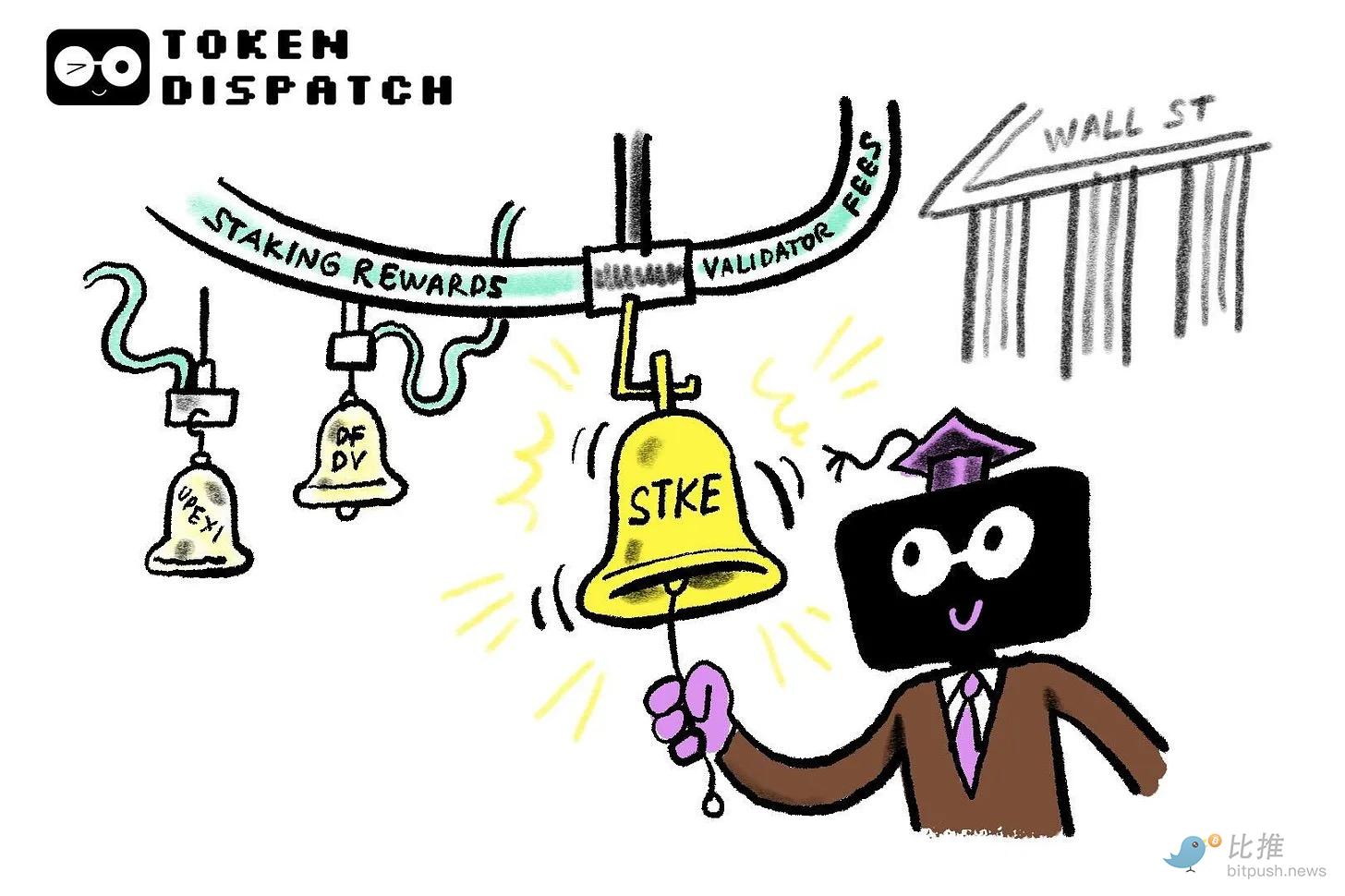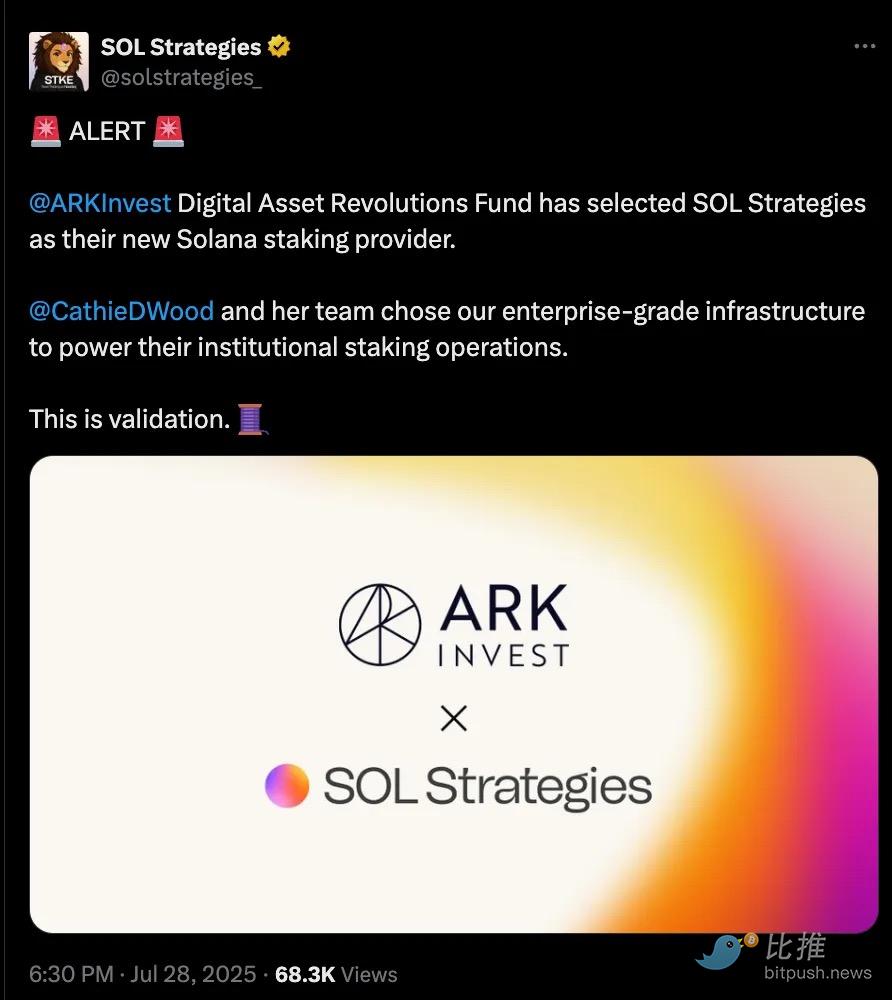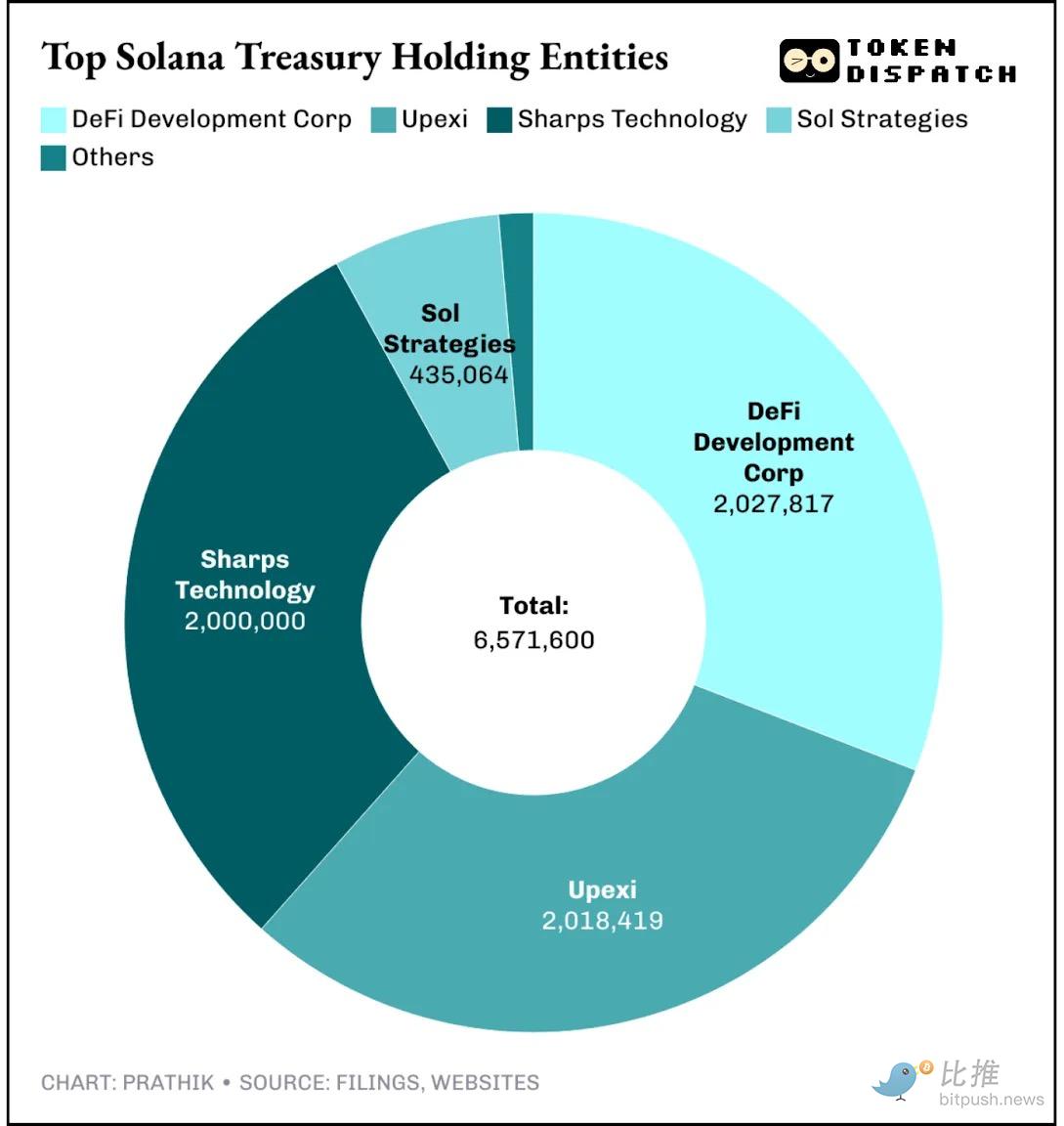Source: Token Dispatch
Author: Prathik Desai
Translation and Compilation: BitpushNews
September 9, 2024
Sol Strategies, then still operating under its original name Cypherpunk Holdings, had not yet undergone a rebranding.
It was still trading on the Canadian Securities Exchange, a market typically reserved for small and micro-cap companies. Just a few months prior, the company had hired former Valkyrie CEO Leah Wald as its new CEO. At that time, Cypherpunk was still relatively unknown, with little attention from investors.
Meanwhile, Upexi focused on driving consumer goods sales for DTC brands, targeting Amazon niches such as pet care and energy solutions, competing fiercely for traffic; DeFi Development Corp (DFDV, still using its old name Janover at the time) was preparing to launch a platform connecting real estate syndicators with investors; and Sharps Technology was producing medical-grade syringes—this extremely niche medical technology was hard to attract investor interest.
At that time, these companies were all small—both in scale and ambition. They collectively held less than $50 million worth of Solana (SOL).
Fast forward a year, and the situation has changed dramatically.
Today, they proudly stand on Nasdaq—the world's second-largest stock exchange—holding over 6 million SOL, valued at up to $1.5 billion, with the value of their Solana holdings skyrocketing 30 times in just one year.

From Margins to Center: Nasdaq's Recognition
This Tuesday, the opening bell at Nasdaq in New York not only marked the official listing of Sol Strategies but also resonated on-chain: users could participate in a "virtual bell ringing" by sending Solana transactions through stke.community, permanently recording this historic moment.
For Sol Strategies, which had traded on the Canadian Securities Exchange (ticker HODL) and the OTCQB market (ticker CYFRF), this was a true "graduation ceremony"—gaining entry to the Nasdaq Global Select Market is no easy feat. This market is known for its stringent standards, typically only accepting blue-chip companies. This listing has granted Sol Strategies the legitimacy that most crypto companies can only dream of.
This is also why the listing of Sol Strategies is significant, even though institutions seeking exposure to Solana on Wall Street can already invest in Upexi and DeFi Development Corp.
Unlike Upexi and DeFi Dev Corp (both of which were already public companies before transforming to hold over 2 million SOL in Solana treasury), Sol Strategies chose the slow route. It established a validator operation, secured institutional delegations like ARK's 3.6 million SOL, passed SOC 2 audits, and strategically positioned itself in the Nasdaq Global Select Market—the top tier of the exchange.
While other companies merely hold SOL, Sol Strategies is actively running the infrastructure that supports it, turning these holdings into viable business operations.
Financial Report Deep Dive: Staking Equals Revenue, Cash Flow Positive
I delved into Sol Strategies' balance sheet to understand the story behind the numbers.
In the quarter ending June 30, Sol Strategies reported revenue of CAD 2.53 million (approximately USD 1.83 million). While this figure may seem modest on its own, the real story lies in the details. This revenue came entirely from staking about 400,000 SOL and operating validators that protect the Solana network—not from selling traditional products. Upexi was burdened by a non-crypto re-commerce business, while DFDV heavily relied on ongoing financing to drive growth, with 40% of its revenue still coming from its non-crypto real estate business.
By providing validator-as-a-service, Sol Strategies opened up new revenue streams from its Solana treasury operations. This approach provides recurring revenue without the burden of growing debt or traditional indirect costs.
Sol Strategies represents its institutional clients' delegated SOL, including the 3.6 million SOL delegation received from Cathie Wood's ARK Invest in July. The commissions from these delegations generate a stable revenue stream. Call it earnings, call it fees, but in accounting terms, it is revenue—something many crypto treasuries cannot showcase.

A typical Solana validator charges about 5%–7% in commissions on staking rewards. The base staking yield hovers around 7%, and these delegated tokens generate approximately 0.35%–0.5% of their nominal value in annual returns for the validator.
Calculating based on 3.6 million SOL (worth over $850 million at current prices), even if Sol Strategies' own treasury sees no price appreciation or yield, this translates to over $3 million in annual fee revenue. This is actually an additional revenue stream, more than half of the staking yield from its own 400,000 SOL holdings, entirely created by external capital.
However, Sol Strategies' third-quarter bottom line shows a net loss of CAD 8.2 million (approximately USD 5.9 million). But if you exclude one-time expenses such as amortization of acquired validator IP, stock-based compensation, and listing costs, the operations themselves are cash flow positive.
Core Advantages
What truly sets Sol Strategies apart from its competitors is how it views Solana.
For the company, the product is not just the Solana token; it is the Solana ecosystem. This unique perspective is both innovative and strategic, allowing Sol Strategies to stand out among its peers in the field.
As more delegators join, the network becomes more secure, and the reputation of the nodes further attracts more delegators—creating a flywheel effect. Every user who delegates SOL to Sol Strategies is both a customer and a co-creator of its revenue, transforming community participation into a measurable driver of shareholder value.
This model allows it to maintain an advantage over competitors that hold far more than it does. Currently, at least seven public companies collectively control 6.5 million SOL (worth $1.56 billion), accounting for 1.2% of the total SOL supply.

In the race for Solana treasury, each company is striving to become the preferred proxy for investors seeking exposure to Solana.
Each company is slightly different: Upexi acquires SOL at a discount, DFDV bets on global expansion, while Sol Strategies focuses on diversified war chests.
The game is the same: accumulate SOL, stake it, and sell a wrapper to Wall Street.
The path Bitcoin took to Wall Street was paved by companies like MicroStrategy, which transformed from a software business into a leveraged BTC treasury company and achieved great success with a spot ETF. Ethereum has also followed a similar path, with companies like BitMine Immersion, Joe Lubin's SharpLink Technologies, and the recent spot ETF.
For Solana, I foresee adoption primarily occurring through operating companies within the network. These businesses not only hold assets but also run validators, earn fees and staking rewards, and publish quarterly earnings. This model is closer to an actively managed company rather than an ETF.
It is this combination of net asset value (NAV) appreciation and real cash flow that is likely to persuade investors to invest through this route. If Sol Strategies can make all this work, it could become the BlackRock of the Solana space.
Risk Warning: Challenges of a New Phase
The future hints at a closer relationship between Wall Street and Solana.
Sol Strategies is exploring the tokenization of its equity to be issued on-chain. Imagine STKE shares not only existing on Nasdaq but also becoming tokens on the Solana chain, exchangeable in DeFi pools and settled instantly with USDC—this bridge of "listed equity + on-chain trading" is something ETFs cannot cross. While still speculative, the trend is blurring the lines between public equity and crypto assets.
However, this is not an easy task. Listing on Nasdaq introduces new challenges, including greater responsibilities for Sol Strategies.
- Validator operation failures or governance missteps could trigger immediate feedback from investors
- Betting on the Solana ecosystem (rather than just the token) means higher risks and rewards
- The SOL network itself still faces risks of disruption and competition from new public chains
- If the stock price falls too far below NAV, arbitrageurs may ignore fundamentals and sell off
Nevertheless, the listing of Sol Strategies remains the best opportunity for Solana to seize a "front-row seat" on Wall Street. Can it package the on-chain treasury into a wrapped investment product and integrate it into Nasdaq? Sol Strategies has now taken on this burden.
免责声明:本文章仅代表作者个人观点,不代表本平台的立场和观点。本文章仅供信息分享,不构成对任何人的任何投资建议。用户与作者之间的任何争议,与本平台无关。如网页中刊载的文章或图片涉及侵权,请提供相关的权利证明和身份证明发送邮件到support@aicoin.com,本平台相关工作人员将会进行核查。



